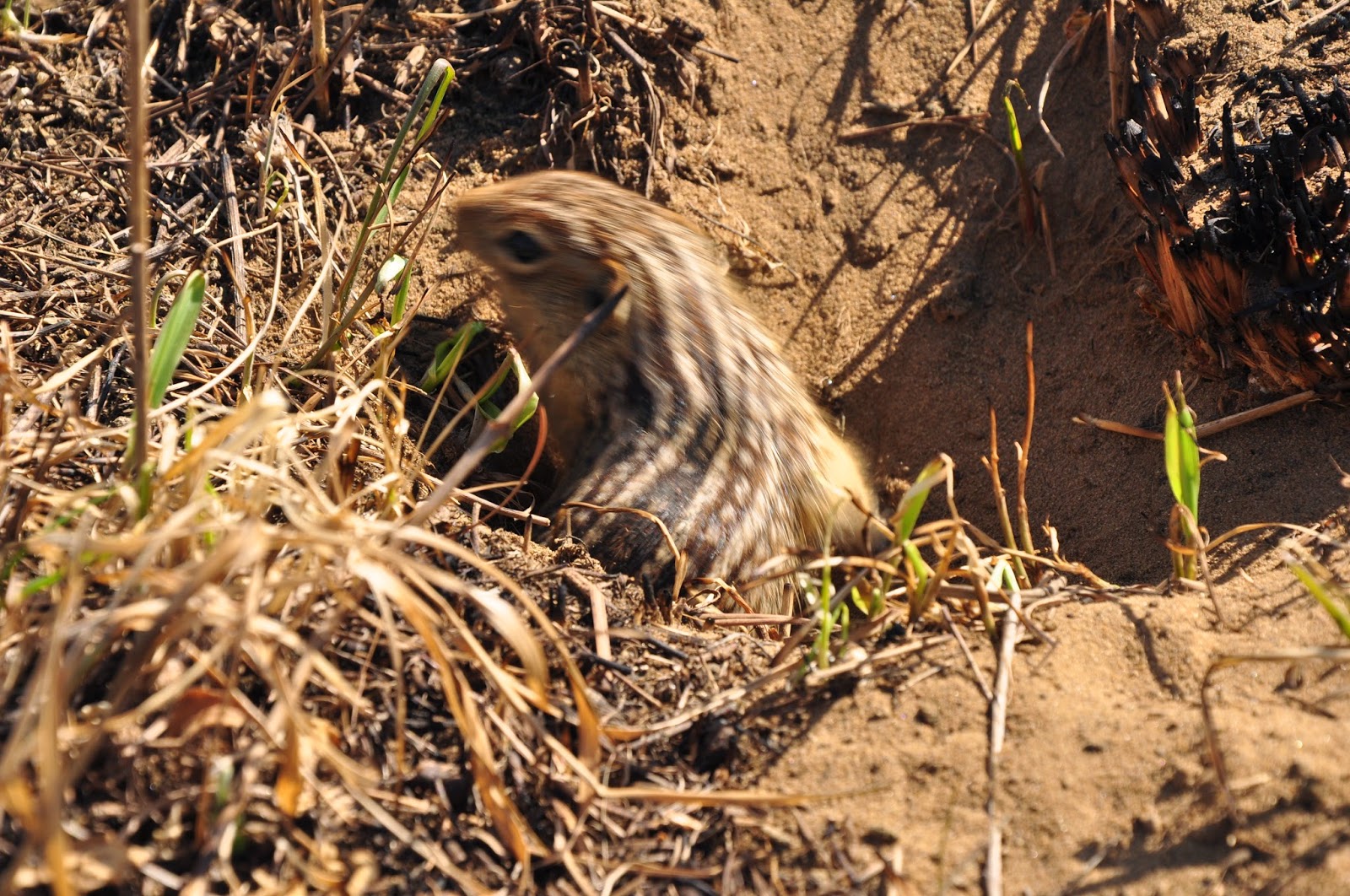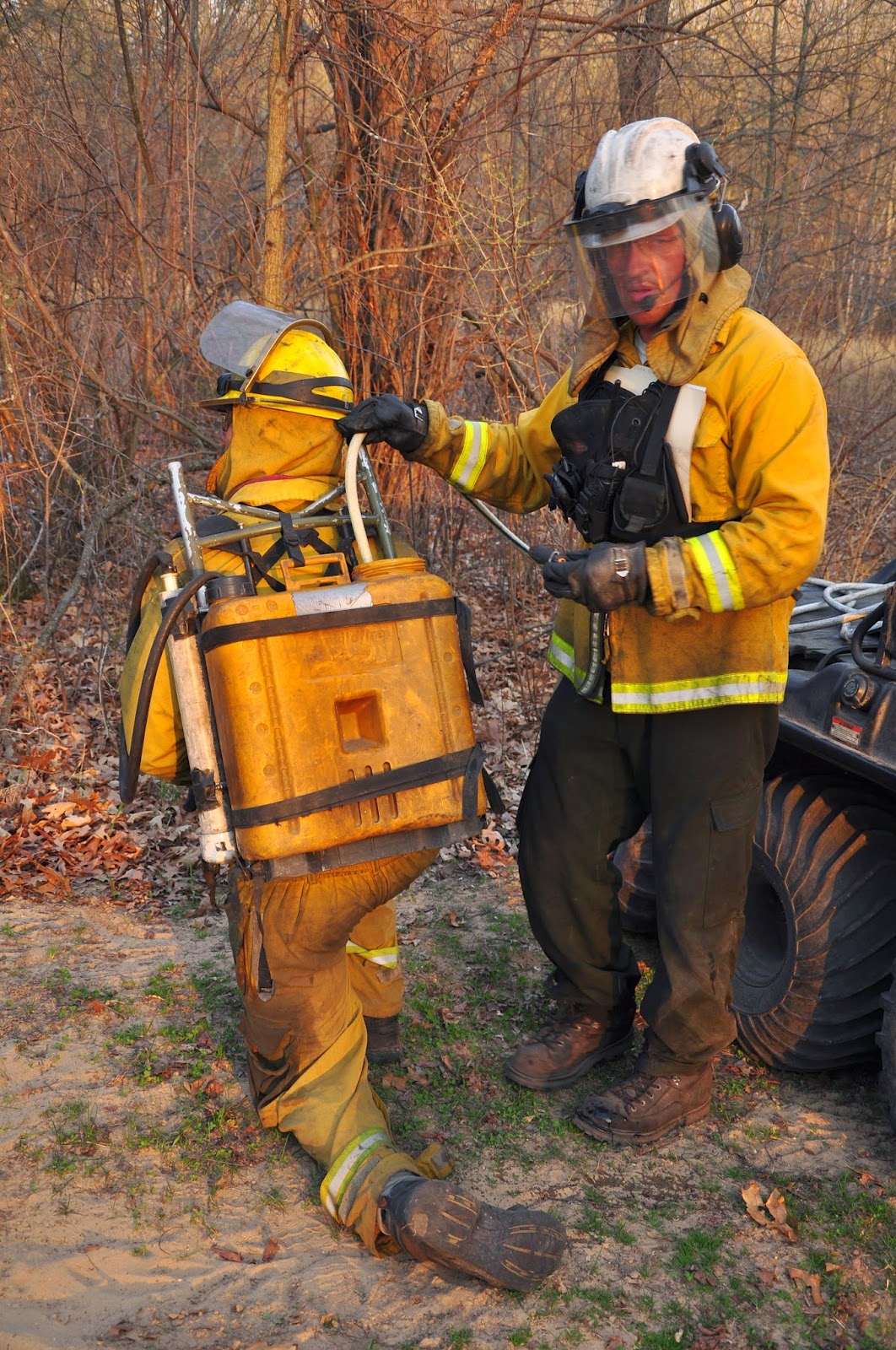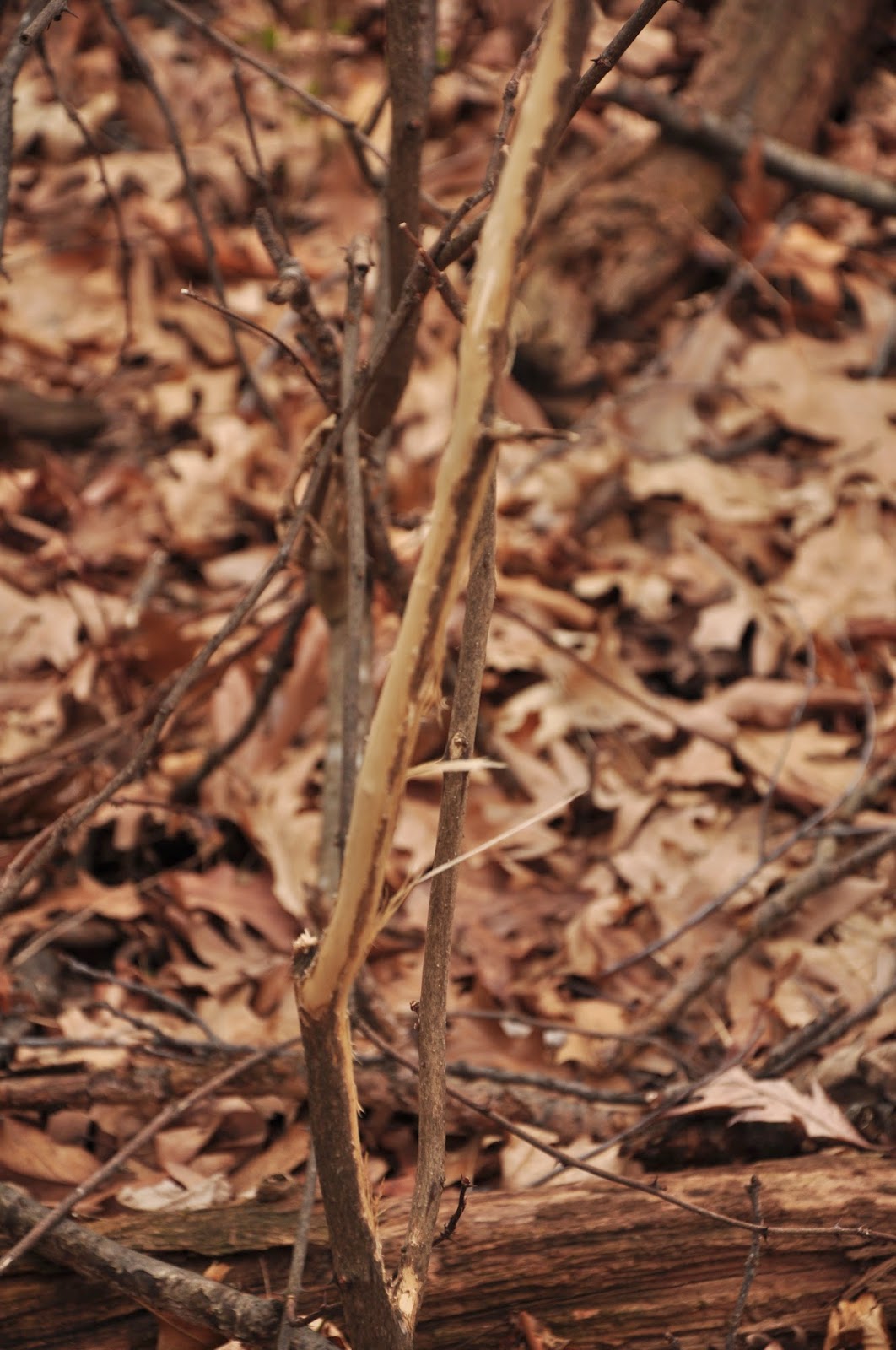On this morning's weekly nature walk, we went out to the burn to see what was happening. We kept finding smallish burrow entrances with great mounds of sandy dirt outside of them. What could be doing it? Do we have thirteen-lined ground squirrels here? It should be good habitat for them, but we've never documented them on the property.
Then, in the distance, I saw movement. "There's one!" I called, pointing to the little mound of ground about 30-40 feet away. (Yeah, right.)

Soon, we saw another one, this one a little closer. (Look in the center of the photo below...click on it to see it larger.)
I was all set to go sneak up on it to take its photo, but everyone else wanted to see where it was, too!
So I decided to sit and wait. I plunked myself down on the burnt ground and aimed my camera at the hole. Before too long, a tentative little face peeked out...
...and then darted back in. Hm. This was going to take longer than I thought.
Patience is a virtue when working with scared dogs, children and photographing wildlife. So I sat and waited. The head would pop out, *click* would go the shutter,
and zzzippp! down it would go back into the hole.
I took advantage of its lengthy absences to inch a little closer to the hole. At one point my whole left leg was sound asleep. I was able to get within a foot of the entrance.
Finally, the stress of my presence got to be too much. With one final look at me....
and then the other direction, to make sure the coast was clear,
it turned and made a hasty departure.
When it got about 20 feet away it stopped and looked back...just to be sure I wasn't following, no doubt. (Can you see it in the middle of the photo below?)
Thirteen-lined ground squirrels are about the same size as chipmunks. They have hardly any external ear flaps, and they have a lot more stripes (and also have spots). I kind of like that one of the common names is the Federation Squirrel (for its stars and stripes). I wonder if more local people knew this then perhaps they would dislike these guys a little less.
These squirrels can be found in fields, lawns, cemeteries...generally in open grassy areas. I've read that where they live near people, they can become rather friendly and tame. The ones we watched today were really very skittish. I'm not surprised. If it weren't for the burn, we'd never have known they were there, and no doubt they feel the same...if not for the burn, they'd never have know that people were here!
According to Mammals of Michigan, their burrow entrances have "no excess dirt." Hm. Apparently the ones in our grassland didn't get that memo. The burrows are up to 20 feet long, and can be several feet deep, with multiple side tunnels (including a hibernation chamber) and exits/entrances. So much for my theory that this guy had just the one entrance, for why else would he stick around with me looming at his front door? Maybe he hadn't gotten around to putting in the second or third door(s). Or, maybe he was overcome with "satiable curiosity," like the Elephant's Child. After all, he didn't make any trilling whistle alarm calls, which are supposedly de rigueur when they feel threatened.
It's mating season for these squirrels...or at least it has been. The young are born in May, so if they haven't gotten around to it yet, they are pushing the envelope a bit.
This little guy is a seed eater, as most squirrels are, but when insects are in season, it puts them at the top of the menu. Yum.
AND! It is one of Michigan's True Hibernators! It tends to go underground before the chipmunk in the fall, often as early as September, and emerges after the chippies come out in the spring. This makes it one of the longest hibernators in the state. Unlike the chippie, it won't even wake up during the winter to feed (how many of us have seen chipmunks out and about in the snow when the temperatures border on mild).
I know that I for one will be keeping my eyes peeled whenever I'm at the grasslands, especially in late May and into June...just on the off-chance that I might see a group of juvenile ground squirrels standing upright to check out their surroundings, just like a troop of meerkats!







































